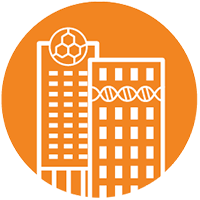Endorsed by Duke AHEAD Steering Committee, November 18, 2015 (Last updated 11/18/15)
Significance
Health professions educators demonstrate leadership and promote change at various levels: in the classroom, institution and profession, as well as among various educator groups. While educators also fulfill specific management roles, they can serve in a leadership capacity as well. Leadership is not limited to a few; it can be fulfilled by educators outside a defined management or authority role.
Leaders emerge from within a group because they express a vision that resonates with others, demonstrate a passion about that vision, and are able to inspire others to join them in realizing that vision. Leaders, therefore, are risk takers who establish personal relationships with others and facilitate change, not by being charismatic, but by articulating a clear vision. Others choose to follow leaders; to be a leader, therefore, does not mean one needs to be in an organizational position of authority. In other words, “leader” is a role, not a job title.
Specific Behaviors That Demonstrate Ability to Facilitate Change and Function As a Leader Within The Educational Environment
- Articulate a vision for improved educational practices in one’s institution and/or profession
- Build consensus to achieve that vision and ensure excellence in education
- Plan and lead change efforts based on an evaluation of program or organizational effectiveness, and/or on an assessment of professional issues and trends
- Advocate for innovative practices and the resources to support their implementation in educational environments that foster learning and development
- Foster a culture of safety, trust, respect and collegiality in which diversity and critical feedback are encouraged and the ongoing development of learners and educators is fostered
- Consider the impact of social, economic, political, and institutional forces when proposing and leading change in health professions education
- Develop intra- and interprofessional networks, collaborations, and partnerships that serve to enhance the quality of education and professional growth of learners


